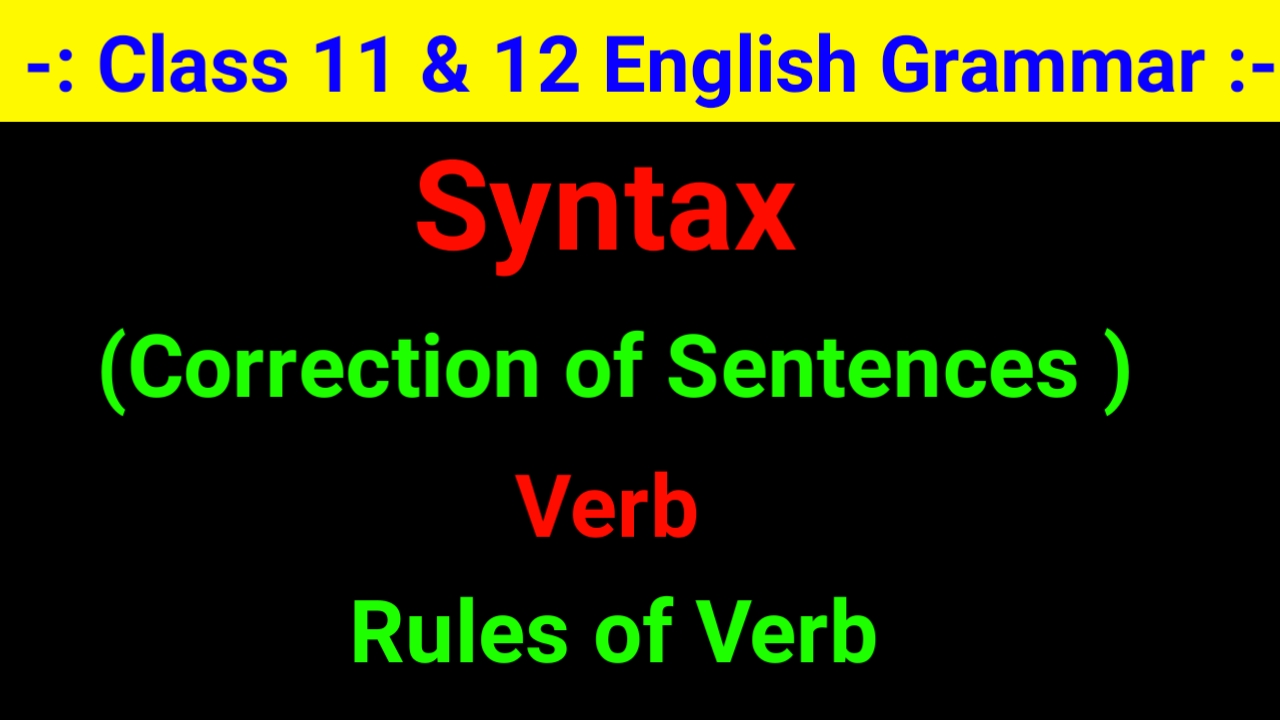Verb

Verb (क्रिया) :- Verb is a word that indicates an action.
Example –
(i) Ravi is my brother.
(ii) He plays cricket.
Kinds of Verb :-
1. Finite Verb 2. Non-finite Verb
Finite Verb :- ऐसा verb जो वाक्य के subject व tense के अनुसार अपने रूप को परिवर्तित कर लेता है, finite verb कहलाता है।
Example –
(i) I know you.
(ii) I am your brother.
(iii) I went to play cricket.
Non finite Verb – ऐसा verb जो वाक्य के subject व tense के अनुसार अपने रूप को परिवर्तित नहीं करता है, Non finite verb कहलाता है।
Example –
(i) I went to play cricket.
(ii) I like playing hockey.
(iii) I saw a wounded dog.
To prepare notes please install our Mobile App – https://play.google.com/store/apps/details?id=com.knowledgebeemplus.online
Kinds of Finite Verb :- Finite Verb निम्नलिखित 4 प्रकार का होता है –
(i) Transitive Verb
(ii) Intransitive Verb
(iii) Linking Verb
(iv) Auxiliary Verb or Helping Verb
Transitive Verb :- जिस verb के साथ object प्रयोग किया जाता है, उसे transitive verb कहते है।
Example –
(i) I bought a book.
(ii) I saw a cow yesterday.
Intransitive Verb :- जिस verb के साथ object प्रयोग नही किया जाता है, उसे intransitive verb कहते है।
Example –
(i) I weep.
(ii) You play.
Linking Verb – Subject व Subject Complement को जोड़ने वाला verb ही linking verb कहलाता है ।
Example –
(i) I am a teacher.
(ii) I became worried.
Auxiliary Verb :- ऐसा verb जो main verb के साथ tense बनाने में सहायता करता है, Auxiliary verb या Helping verb कहलाता है।
Example –
(i) I have done it.
(ii) I can do it.
Auxiliary verb निम्नलिखित 2 प्रकार का होता है –
(i) Primary Auxiliaries
(ii) Modal Auxiliaries
Active and Passive Voice – https://knowledgebeemplus.com/active-voice-into-passive-voice/
Kinds of Non finite verb – Non finite verb निम्नलिखित 3 प्रकार का होता है –
(i) Participle
(ii) Gerund
(iii) Infinitive
Participle – ऐसा word जो Verb तथा Adjective दोनों का कार्य करता है, Participle कहलाता है।
Participle तीन प्रकार का होता है –
( i ) Present Participle MV ( I form+ing )
( ii ) Past Participle MV ( III form )
( iii ) Perfect Participle
having + MV ( III form ) + — Active Voice में
having been + MV ( III form) – Passive में
Infinitive – Verb के first form से पहले ‘to’ का प्रयोग करने से प्राय: Infinitive का निर्माण होता हैं तथा इसका हिंदी अर्थ लेने पर क्रिया के अन्त में ना, ने, नी देखने को मिलता हैं।
Example –
(i) To play is a good
(ii) I want to see the Tajmahal.
Gerund – Verb के first form में ing लगाने से Gerund का निर्माण होता हैं तथा इसका हिंदी अर्थ लेने पर क्रिया के अन्त में ना, ने, नी देखने को मिलता हैं।
Examples –
(i) Playing is good exercise.
(ii) I like reading books.
Learn about pronoun – https://knowledgebeemplus.com/pronoun/
Rules of Verb :-
Rule 1- Many a, one of, neither, either, each के साथ singular verb का प्रयोग किया जाता है ।
Rule – 2 यदि एक noun या pronoun – as well as या with से एक दूसरे noun या pronoun से जुड़ा हुआ हो तो Verb सदैव ही पहले वाले noun या pronoun के अनुसार प्रयोग किया जाता है ।
Rule – 3 यदि subject एक ही वस्तु का बोध कराये तो Verb सदैव ही Singular होता है ।
Example –
The cart and horse is ready.
Rule – 4 यदि दो noun या pronoun – not only … but also से जुड़े हो तो verb सदैव ही बाद वाले noun या pronoun के अनुसार प्रयोग होगा ।
Example –
Not only Ravi but also his friends are ready.
Rule -5 जब भिन्न person के subject – or, nor से जुड़े हो तो verb सदैव ही बाद वाले person के अनुसार प्रयोग किया जाता है।
Rule – 6 यदि दिऐ हुए वाक्य में प्रयोग हुआ clause दोनो Future Tense में हो तो if वाले clause को हम Present Indefinite में लिखते है।
Example –
If he comes, I will go to school
Rule -7 यदि समय का प्रयोग Present Perfect Tense मे हुआ हो तो इसे Past indefinite Tense मे change कर देते है।
Example –
I saw you yesterday .
Rule – 8 Need, dare ( साहस करना ) के पश्चात् to का प्रयोग नहीं किया जाता है।
Our Telegram Channel – https://t.me/Knowledgebeem
For Complete Preparation of English for Board Exam please Visit our YouTube channel –
https://www.youtube.com/c/Knowledgebeem
Our Mobile Application for Solved Exercise – https://play.google.com/store/apps/details?id=com.knowledgebeem.online
Visit Our Website –
https://www.knowledgebeem.com
















